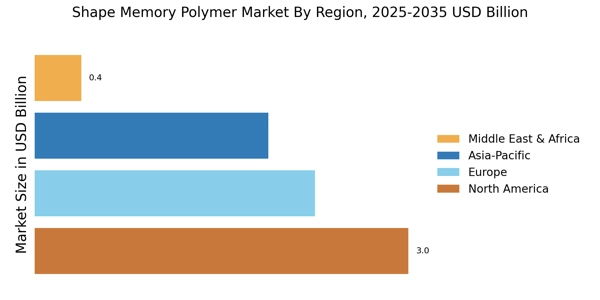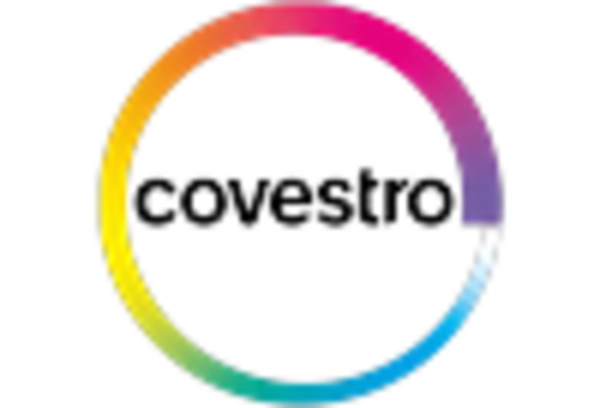Growth in Medical Applications
Shape memory polymers are gaining traction in the medical field, particularly in the development of stents, sutures, and drug delivery systems. The unique properties of these materials allow for minimally invasive procedures, which are increasingly preferred in modern medicine. The Shape Memory Polymer Market is expected to expand significantly, with market analysts projecting a growth rate of approximately 12% annually. This growth is attributed to the increasing prevalence of chronic diseases and the demand for innovative medical devices that enhance patient outcomes. As healthcare providers seek to improve surgical techniques and patient recovery times, the integration of shape memory polymers into medical applications is likely to become more prevalent.
Rising Demand in Automotive Sector
The automotive industry is increasingly adopting shape memory polymers due to their lightweight and flexible properties. These materials are utilized in various applications, including seat structures, interior components, and safety features. The Shape Memory Polymer Market is projected to witness a substantial growth rate, with estimates suggesting a compound annual growth rate of over 15% in the coming years. This trend is driven by the need for enhanced fuel efficiency and performance in vehicles, as manufacturers seek innovative materials that can reduce overall weight while maintaining structural integrity. As automotive manufacturers continue to explore advanced materials, the demand for shape memory polymers is likely to rise, further solidifying their role in the industry.
Advancements in Aerospace Technology
The aerospace sector is exploring the use of shape memory polymers for various applications, including actuators, wing structures, and thermal protection systems. These materials offer unique advantages, such as the ability to change shape in response to temperature variations, which can enhance the performance and efficiency of aircraft. The Shape Memory Polymer Market is poised for growth, with projections indicating a potential increase in market size driven by the aerospace industry's demand for lightweight and durable materials. As aerospace manufacturers continue to innovate and seek materials that can withstand extreme conditions, the adoption of shape memory polymers is expected to rise, contributing to advancements in aircraft design and functionality.
Emerging Applications in Construction
Shape memory polymers are beginning to find applications in the construction industry, particularly in smart building materials and adaptive structures. These materials can respond to environmental changes, providing enhanced energy efficiency and structural integrity. The Shape Memory Polymer Market is anticipated to grow as architects and builders seek innovative solutions to meet sustainability goals and improve building performance. Market analysts predict a growth rate of approximately 8% in this sector, driven by the increasing emphasis on green building practices and the need for materials that can adapt to changing conditions. As the construction industry evolves, the integration of shape memory polymers is likely to play a crucial role in shaping the future of building design.
Increased Focus on Consumer Electronics
The consumer electronics market is witnessing a surge in the adoption of shape memory polymers, particularly in the development of flexible displays, wearable devices, and smart gadgets. These materials enable manufacturers to create products that are not only functional but also aesthetically appealing. The Shape Memory Polymer Market is likely to benefit from this trend, with market forecasts suggesting a growth rate of around 10% in the next few years. As consumer preferences shift towards innovative and versatile electronic devices, the demand for shape memory polymers is expected to increase, allowing manufacturers to differentiate their products in a competitive landscape.


















Leave a Comment